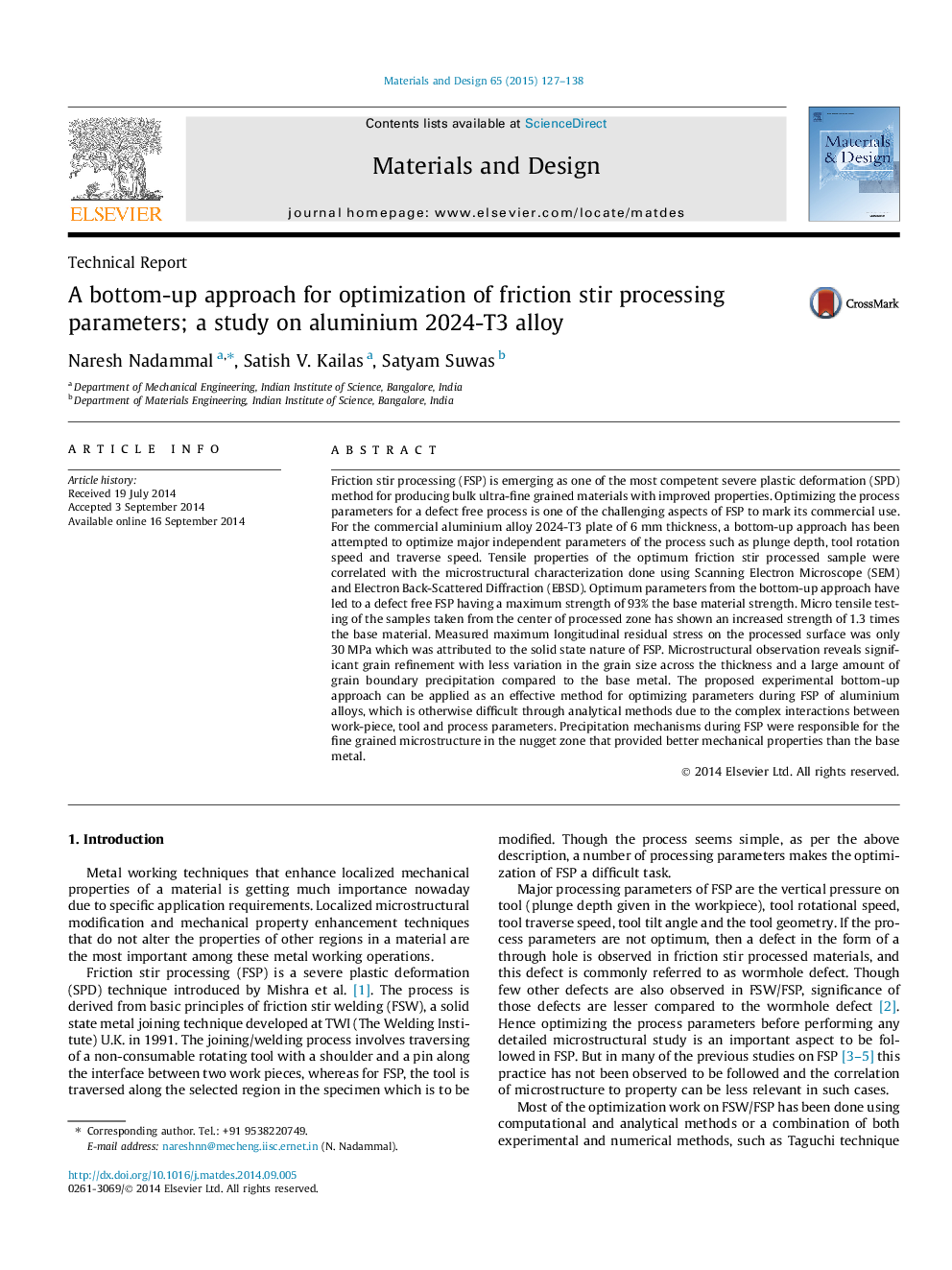| کد مقاله | کد نشریه | سال انتشار | مقاله انگلیسی | نسخه تمام متن |
|---|---|---|---|---|
| 828790 | 1470332 | 2015 | 12 صفحه PDF | دانلود رایگان |

• An experimental bottom-up approach has been developed for optimizing the process parameters for friction stir processing.
• Optimum parameter processed samples were tested and characterized in detail.
• Ultimate tensile strength of 1.3 times the base metal strength was obtained.
• Residual stresses on the processed surface were only 10% of the yield strength of base metal.
• Microstructure observations revealed fine equi-axed grains with precipitate particles at the grain boundaries.
Friction stir processing (FSP) is emerging as one of the most competent severe plastic deformation (SPD) method for producing bulk ultra-fine grained materials with improved properties. Optimizing the process parameters for a defect free process is one of the challenging aspects of FSP to mark its commercial use. For the commercial aluminium alloy 2024-T3 plate of 6 mm thickness, a bottom-up approach has been attempted to optimize major independent parameters of the process such as plunge depth, tool rotation speed and traverse speed. Tensile properties of the optimum friction stir processed sample were correlated with the microstructural characterization done using Scanning Electron Microscope (SEM) and Electron Back-Scattered Diffraction (EBSD). Optimum parameters from the bottom-up approach have led to a defect free FSP having a maximum strength of 93% the base material strength. Micro tensile testing of the samples taken from the center of processed zone has shown an increased strength of 1.3 times the base material. Measured maximum longitudinal residual stress on the processed surface was only 30 MPa which was attributed to the solid state nature of FSP. Microstructural observation reveals significant grain refinement with less variation in the grain size across the thickness and a large amount of grain boundary precipitation compared to the base metal. The proposed experimental bottom-up approach can be applied as an effective method for optimizing parameters during FSP of aluminium alloys, which is otherwise difficult through analytical methods due to the complex interactions between work-piece, tool and process parameters. Precipitation mechanisms during FSP were responsible for the fine grained microstructure in the nugget zone that provided better mechanical properties than the base metal.
Journal: Materials & Design (1980-2015) - Volume 65, January 2015, Pages 127–138